Tucked into the Himalayas, Nepal is home to some of the planet’s most stunning trekking routes. Trails range from classic Everest Base Camp paths to quieter Makalu routes, catering to both seasoned hikers and casual explorers.
When it comes to trekking, Nepal blends vibrant local culture with raw mountain beauty better than anywhere else. Think prayer flags fluttering over rocky trails, tea houses dotting valleys, and peaks that leave you speechless. Routes here don’t just test stamina—they immerse walkers in landscapes shaped by glaciers, forests, and centuries-old traditions. Whether chasing famous summits or hidden trails, every step feels like a discovery.
Everest Base Camp: The Iconic Journey
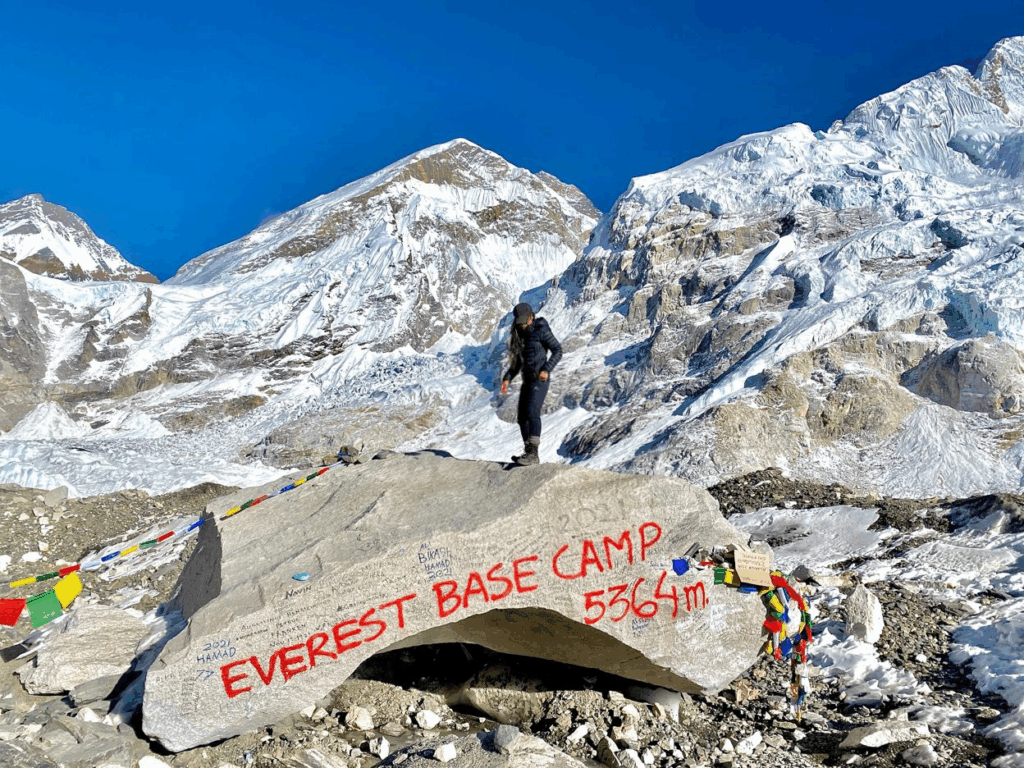
For many adventurers, the trek Nepal has to offer that tops bucket lists is Everest Base Camp. It kicks off with a thrilling flight into Lukla, leading to a path beloved by hikers worldwide.
Starting easy, the route moves from Lukla to Phakding at 2,610 meters. Next comes the first real challenge: climbing from Phakding to Namche Bazaar, perched at 3,440 meters. This spot acts as a gateway to Everest. Trails then wind through Tengboche, Dingboche, and Lobuche before reaching base camp at 5,364 meters.
What sticks with people isn’t just standing near Earth’s highest peak. It’s walking past Sherpa villages, crossing swaying bridges lined with prayer flags, and soaking up Buddhist traditions that thrive in thin air.
Annapurna Circuit: A Complete Mountain Experience

Annapurna Circuit easily secures its place among the best treks in Nepal. Why? Few routes pack such variety: think rice terraces, lush forests, dry cliffs, and icy peaks all in one journey. Push yourself to tackle Thorong La Pass at 5,416m – that tough climb pays off when endless mountains fill your vision. Afterwards, winding down into the Mustang region reveals villages where Tibetan culture feels alive in stone houses and prayer flags.
No two days here feel the same. You’ll shift climates like flipping pages, from humid valleys to crisp mountain air. Crowds thin out after peak seasons, letting trails speak for themselves. Just remember: pack light, take it slow, and let those views sink in.
Annapurna Base Camp: The Sanctuary Trek
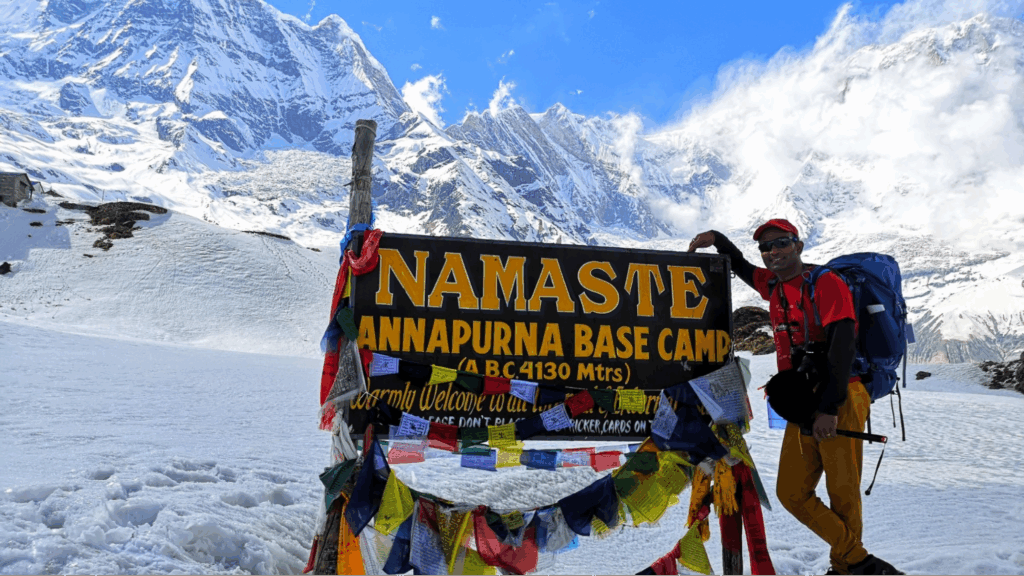
Short on time but still want epic mountain views? Trekking in Nepal doesn’t get much better than Annapurna Base Camp. Often called Sanctuary Trek, this route skips the full circuit’s marathon length but delivers equal wow factor. Think winding trails through villages and forests, ending in a jaw-dropping bowl of peaks. No zoom lenses needed here—glaciers and summits feel arm’s length away when you reach that final viewpoint. Perfect mix of punchy adventure and Himalayan grandeur, all wrapped up in about a week.
Manaslu Circuit: The Road Less Traveled

If crowds aren’t your thing, Manaslu Circuit might just hit the spot. This trek in Nepal winds along old salt-trading paths circling the world’s eighth-highest peak. Until a few years back, barely anyone wandered here—meaning you’ll still catch glimpses of daily life in remote villages, unfiltered and raw.
Permits and guides are required here, but rules help keep landscapes untouched. The big moment? Crossing Larkya La Pass at 5,160 meters. Thin air bites hard, but rewards come in killer panoramas of icy ridges and valleys below. Sure, it’s tough, but that’s what makes stories worth sharing later.
Upper Mustang Loop: A Journey Through Time
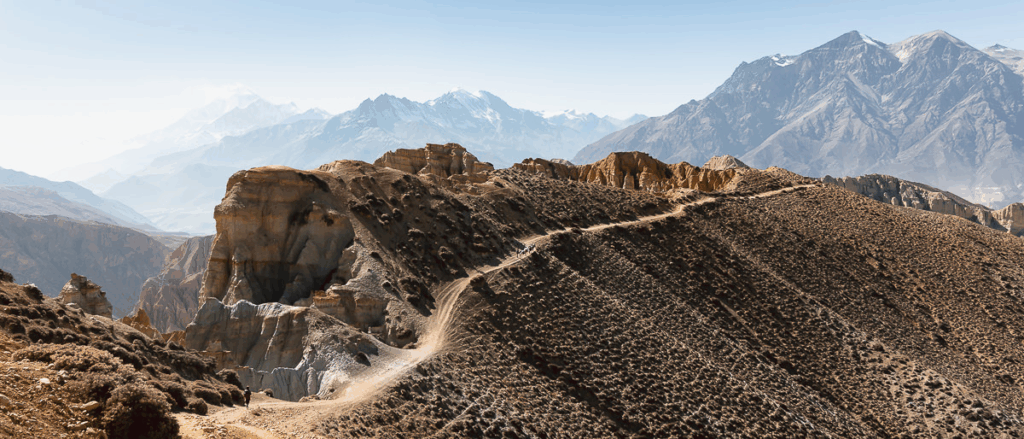
Nepal trekking serves up cultural adventures you won’t forget. For proof, head to the Upper Mustang region. This place was off-limits for years. Now? Arid valleys give Tibet vibes more than typical Nepal scenes. Check out monasteries older than your grandma’s recipes, caves cut into cliffs, villages surrounded by ancient walls. Feels like time travel.
Those eroded cliffs and winding canyons? They shape landscapes you won’t see anywhere else here. Yeah, permits aren’t cheap. But empty trails and chances to connect with local traditions? That’s what makes the Upper Mustang stick in your memory.
Ghandruk Loop: Perfect for Beginners

Not all Nepal hiking adventures demand weeks. Try Ghandruk Loop for Himalayan trekking condensed into 3-5 days. Ideal for first-timers or busy travelers, this route packs in big scenery and cultural connections without the long haul.
Stone-paved trails wind through Gurung villages where traditional homes line paths. Clear skies reveal Annapurna peaks towering above—a dramatic contrast to the trek’s manageable pace. No need for advanced skills here, just decent stamina and curiosity about mountain life. Walk, rest, repeat, with tea-house stays adding local flavor between stretches of rhododendron forests and terraced fields. Views stay sharp, crowds stay thin, and memories stick around longer than you’d expect from such a compact journey.
Pikey Peak Trek: Everest Views Without the Crowds
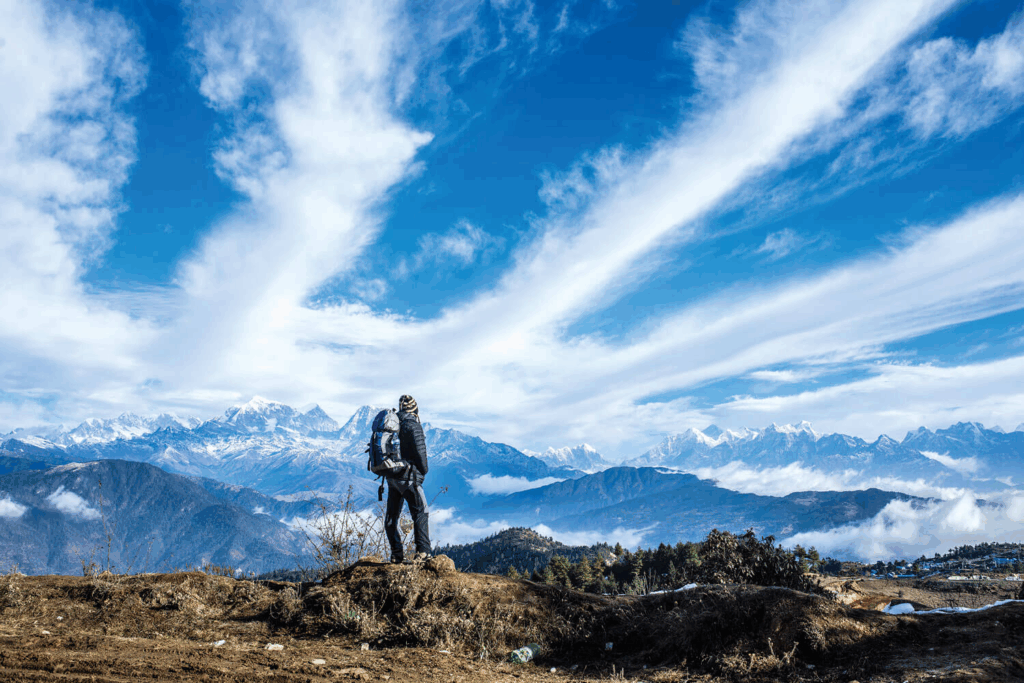
Pikey Peak Trek is becoming a go-to for hikers chasing Everest vistas but hoping to skip crowds and high-altitude struggles of classic base camp routes. Even Edmund Hillary called Pikey Peak’s Everest vista his top pick.
Routes wind through lower Solukhumbu, where wide-open views stretch from Everest to Makalu and plenty more. Trails stay quieter, letting you soak it all in without jostling for space. Culture’s a big part too—you’ll pass traditional Sherpa communities, where daily life unfolds with minimal tourist buzz. It’s Nepal’s mountain magic distilled, just a bit more slowly and simply.
Langtang Valley: Phoenix from the Ashes
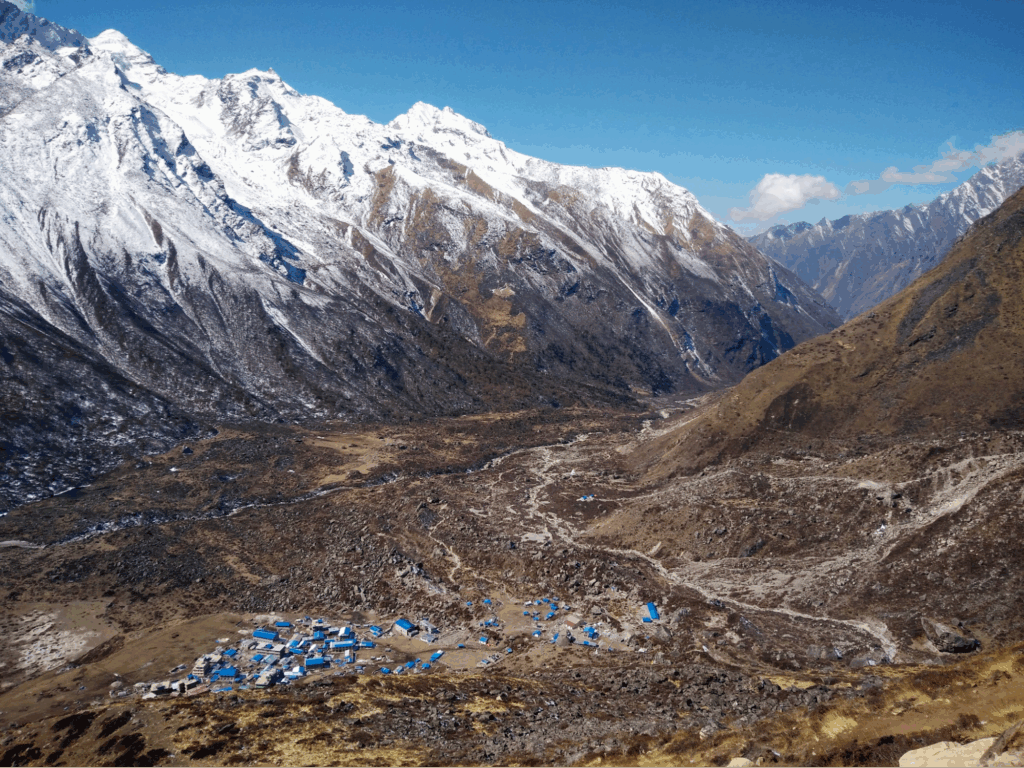
Langtang Valley faced massive damage during Nepal’s 2015 earthquake. But locals rebuilt trails and homes—now, it’s a spot where recovery meets raw mountain beauty. Here, hiking in Nepal blends tough history with trails that wind past waterfalls and quiet villages.
Routes begin just hours from Kathmandu, great if you’re squeezing adventure into a busy schedule. Landscapes shift fast: thick forests give way to open meadows dotted with wildflowers.
Don’t miss Kyanjin Gompa, a centuries-old monastery where prayer flags flutter in the wind. For jaw-dropping views, tackle the steep climb up Kyanjin Ri—it’s optional, but worth every step.
Tilicho Lake Trek: The Highest Lake Journey
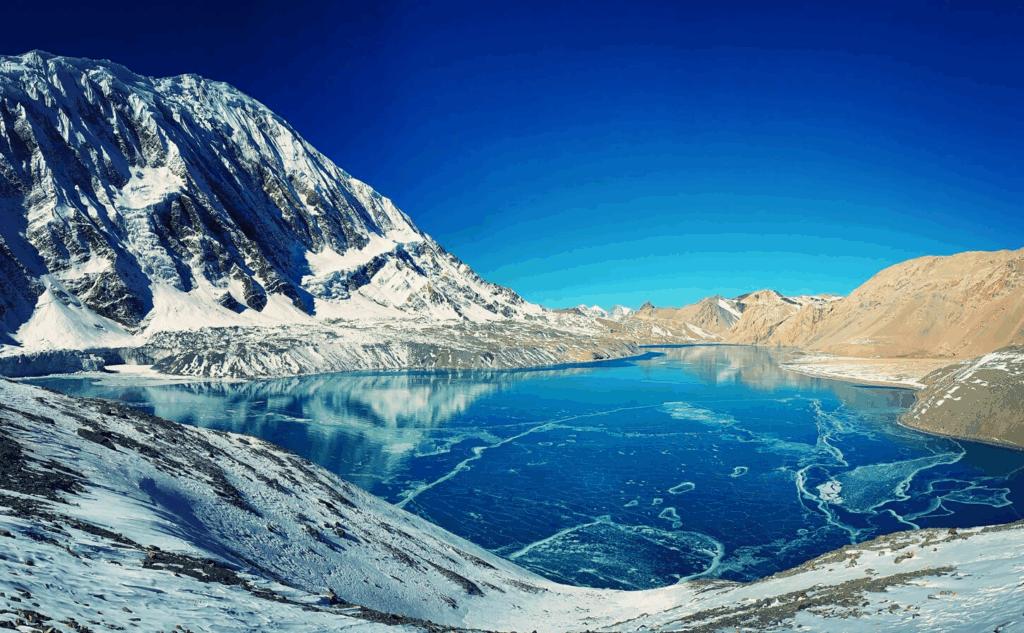
Trekking to Tilicho Lake—sometimes tacked onto Annapurna Circuit hikes—reaches 4,919 meters. Few lakes sit this high. Trails here aren’t gentle. You’ll navigate rocky stretches and a sketchy landslide section that keeps hikers alert. But stick with it. At the top, turquoise water shimmers under icy peaks. It’s the kind of sight that makes blisters and thin air feel worth it.
Kanchenjunga Base Camp: The Eastern Giant

Hiking the Nepal trek to Kanchenjunga Base Camp puts you at the base of Earth’s third-highest mountain. This less-traveled path in eastern Nepal winds through untouched landscapes, shifting from lush forests to high-altitude terrain. Trekkers can loop through both north and south base camps on a single route. You’ll find quiet trails here—a stark contrast to crowded paths elsewhere.
Poon Hill Trek: Short but Sweet

Short on time or new to trekking? Poon Hill delivers a classic Himalayan experience in just 4-5 days. Mornings here steal the show—hikers reach the summit early to watch dawn paint Dhaulagiri, Annapurna South, Machapuchare, and neighboring peaks in gold.
This route’s accessibility keeps it popular. No technical skills are needed, yet you still get those iconic mountain vistas. For many, it’s their first taste of the best hikes in Nepal, blending manageable effort with unforgettable rewards. Pack light, take it slow, and savor those sunrise moments—they’re worth every step.
Gokyo Lakes Trek: Turquoise Jewels
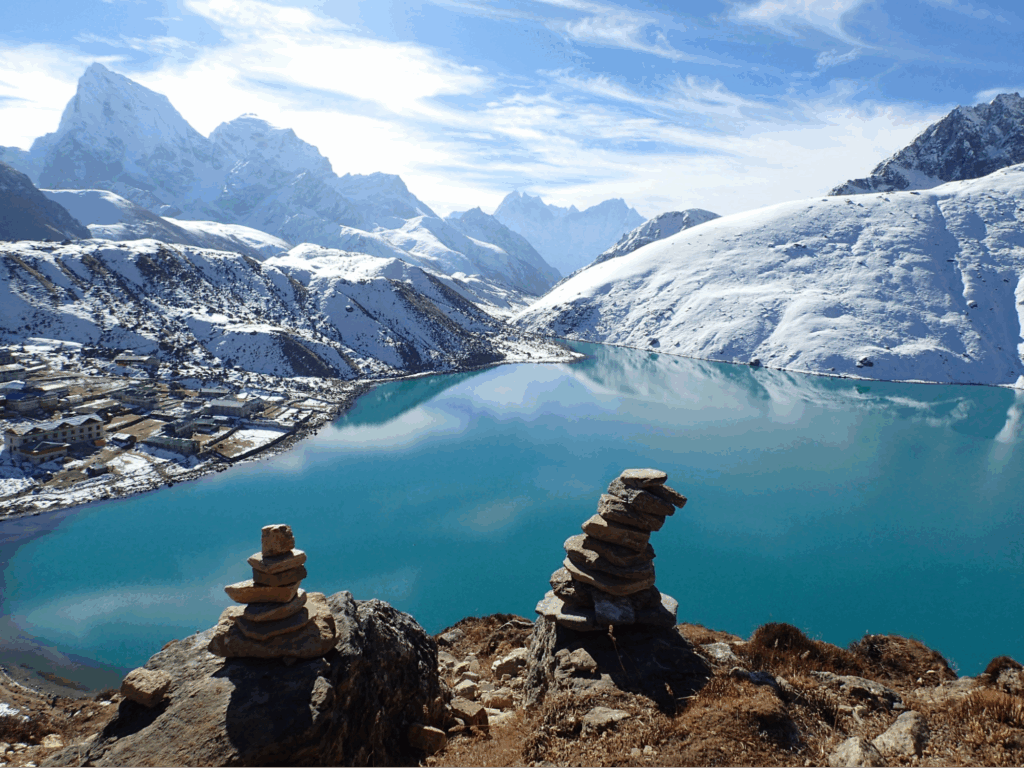
When it comes to hiking, Nepal isn’t just about Everest. Try Gokyo Lakes trek instead—it’s quieter but just as striking. Picture turquoise lakes tucked high in Khumbu, surrounded by raw Himalayan beauty. Climbing Gokyo Ri rewards hikers with jaw-dropping views: Everest, Lhotse, Makalu, and Cho Oyu all line up like giants.
For those craving tougher terrain, Cho La Pass tests stamina but connects seamlessly to Everest Base Camp routes. And don’t overlook Ngozumpa Glacier—its cracked, icy sprawl feels otherworldly. Perfect for hikers wanting paths less packed but views just as grand.
Makalu Base Camp Trek: The Ultimate Wilderness

If you’re after real wilderness, the best trek in Nepal for seasoned adventurers might just be Makalu Base Camp. Tough trails lead to Mount Makalu’s base, fifth-highest peak on earth, crossing untouched Himalayan zones most travelers never see.
Hike through Makalu-Barun National Park, known for its wild mix of plants and animals, and you’ll pass isolated villages, dense rhododendron forests, wide alpine meadows, and jagged glacier-carved ridges. Landscapes change fast here—walk under shady trees one minute, then stare up at blinding ice walls the next. No tourist crowds, no fancy trails. Just mountains in their most untamed form, nonstop.
Practical Considerations for Trekking in Nepal
Trekking Nepal’s Himalayan routes? You’ll find epic views—think Everest Base Camp or Upper Mustang’s dusty, ancient valleys. But those rugged paths demand more than just sturdy boots.
Timing and Permits: Plan Ahead
The best trekking seasons are October–November (post-monsoon clarity) and March–April (spring blooms). Avoid monsoon (June–September) due to landslides and winter (December–February) for extreme cold.
- Permits: All trekkers need permits, which vary by region (e.g., TIMS Card, Annapurna Conservation Area Permit, restricted area permits).
- Guides: Many remote trails (e.g., Manaslu, Upper Dolpo) legally require a licensed guide. Book through ethical agencies to ensure fair wages.
Health and Safety: Prioritize Wellbeing
Altitude sickness (AMS) is a silent threat. Acclimatize properly:
- Ascend gradually (≤500m elevation gain per day above 3,000m).
- Carry Diamox (consult a doctor) and recognize AMS symptoms (headaches, nausea).
- Vaccinations: Ensure hepatitis A, typhoid, and tetanus shots are up to date.
- Water Safety: Use purification tablets, filters, or UV sterilisers—avoid single-use plastic bottles.
Pack Smart: Gear for All Conditions
Nepal’s weather shifts rapidly. Essentials include:
- Layered Clothing: Moisture-wicking base layers, insulated mid-layers, and a waterproof shell.
- Footwear: Sturdy, broken-in hiking boots and wool socks to prevent blisters.
- Sleeping Gear: A lightweight sleeping bag (even tea houses can get chilly).
- Extras: Trekking poles (save knees on descents), a reusable insulated bottle, and a solar charger.
Finances: Cash is King
ATMs are scarce in remote areas.
- Carry Nepali rupees in small bills for tea houses, snacks, and tips.
- Budget ₹2,500–₹5,000 per day (varies by route).
- Tipping: Allocate 5–10% of your guide/porter’s fee as gratitude.
Cultural Sensitivity: Respect Local Traditions
Nepal’s diverse cultures are part of its magic.
- Learn Basic Phrases: “Namaste” (hello), “Dhanyabad” (thank you).
- Dress Modestly: Cover shoulders and knees in villages and temples.
Leave No Trace: Protect the Himalayas
- Pack Out Waste: Carry biodegradable trash bags; avoid littering.
- Eco-Friendly Choices: Use reusable containers and natural toiletries.
- Stay on Trails: Prevent erosion and respect wildlife habitats.
Logistics: Prepare for the Unexpected
- Connectivity: Buy a local SIM (Ncell/Namaste) in Kathmandu for emergencies.
- Buffer Days: Mountain flights (e.g., Lukla) are weather-dependent—add 2–3 flexible days.
- Travel Insurance: Confirm coverage for altitudes up to 6,000m and helicopter evacuations.
Trail Etiquette: Share the Path
- Yield to Porters: They carry heavy loads—step to the mountain side when they pass.
- Secure Food: Tea house rodents are crafty! Store snacks in sealed bags.
Train Your Body (and Mind)
- Physical Prep: Build endurance with stair climbing, hikes, and weighted backpack training.
- Mental Resilience: Embrace cold showers, squat toilets, and itinerary changes—it’s all part of the adventure!
Hiking in Nepal isn’t just about reaching summits. It’s about valuing local communities and natural environments. Whether it’s your first trek or your tenth, remember: these mountains aren’t just postcard backdrops. They’re homes, sacred spaces, and fragile ecosystems. Travel smart, keep it humble, and Nepal’s peaks will reward you with stories worth sharing.
Plan ahead. Pack only what’s needed. Interact with care. Doing this makes your trip safer and helps keep the Himalayas vibrant for future travelers.
Final Thoughts: The Magic of Treks in Nepal
Nepal’s treks leave marks not only through rugged peaks or demanding trails. What truly sticks? Moments like strangers in villages offering shelter, wind-tossed flags painting bright streaks overhead, or gulping down hot, sweet tea when legs feel like jelly. Those slices of connection—with land and people—reshape how wanderers see their place in the world.
Tried-and-tested routes deliver thrills, but quieter corners let you hear your own footsteps. Both hold power. Maybe that’s why so many who come for mountains once end up chasing them forever—not for summit photos, but for that quiet shift inside they can’t quite name.




